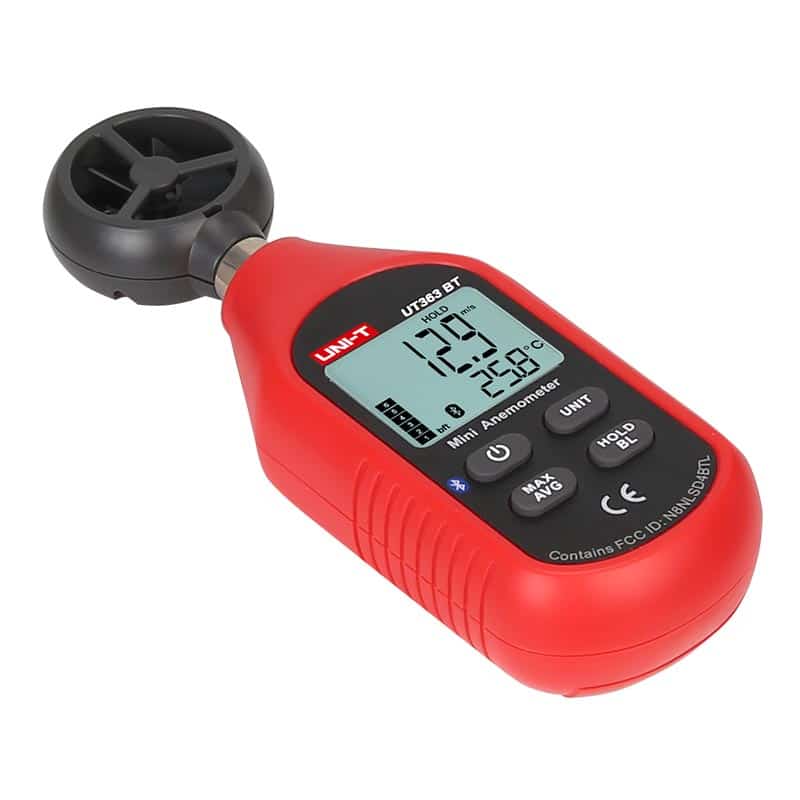Choosing the Right Anemometer: A Comprehensive Buying Guide
Choosing the Right Anemometer: A Comprehensive Buying Guide
Blog Article
Checking Out the Features and Benefits of Anemometers for Weather Condition Lovers and Experts
From cup anemometers to sonic anemometers, each type brings its unique collection of applications and advantages, dropping light on numerous facets of atmospheric problems. As we dig into the features and benefits of anemometers, a deeper understanding arises not only of dominating weather condition phenomena yet likewise of the broader implications for fields like wind energy manufacturing and environmental study.
Value of Anemometers in Weather Surveillance
Anemometers play an essential role in weather surveillance by giving accurate dimensions of wind speed, helping in projecting and understanding weather condition patterns. These instruments, varying from conventional mug anemometers to modern ultrasonic anemometers, are crucial for meteorologists, researchers, and weather condition enthusiasts alike. By determining wind rate, anemometers help in establishing the intensity of weather condition sensations such as tornadoes, storms, and tornados. Additionally, they supply beneficial data for aviation, maritime procedures, and numerous industries that are sensitive to wind conditions.

Kinds of Anemometers and Their Applications
The most usual types of anemometers consist of mug anemometers, vane anemometers, hot-wire anemometers, and ultrasonic anemometers. Mug anemometers are composed of three or 4 cups installed on horizontal arms that rotate with the wind, measuring its rate. Vane anemometers, on the other hand, utilize a freely turning vane to straighten with the wind direction, giving both wind rate and instructions dimensions.
Each sort of anemometer has its one-of-a-kind benefits and applications. Mug anemometers are appropriate and durable for general climate monitoring, while vane anemometers are preferred for directional dimensions. Hot-wire anemometers are sensitive to reduced air rates, making them suitable for indoor atmospheres. Ultrasonic anemometers are non-intrusive and supply high accuracy, commonly used in research study and specialized climate monitoring applications. Comprehending the features and applications of each sort of anemometer is crucial for choosing one of the most appropriate instrument for certain climate keeping track of requirements.
Advantages of Using Anemometers in Forecasting
In meteorology, the utilization of anemometers offers important advantages for boosting the accuracy of weather forecasting. Anemometers gauge wind speed and instructions, giving essential data for forecasting climate patterns. By integrating wind data into projecting models, meteorologists can better recognize the activity of weather condition systems, expect changes in climatic problems, and concern extra exact forecasts.
Moreover, anemometers play an essential function in evaluating potential weather hazards. Monitoring wind rates helps forecasters forecast serious weather condition events such as cyclones, twisters, and winter tornados with greater precision. This early caution system allows authorities to release timely signals and carry out necessary precaution, lowering the threats to life and home.
Additionally, anemometers aid in optimizing renewable resource manufacturing. By assessing wind patterns, meteorologists can recognize ideal locations for wind ranches and predict energy result, adding to the efficient generation of wind power.

Anemometers in Wind Power Manufacturing
Given the critical function anemometers play in supplying exact wind information for weather condition forecasting and hazard analysis, their importance encompasses the world of wind power production. Anemometers are vital tools More Info in the area of wind power, where the dimension of wind rate and instructions is essential for figuring out the usefulness and performance of wind generator installments. By accurately measuring wind speeds at varying elevations, anemometers assist maximize the positioning and layout of wind generators to take full advantage of energy outcome.
In wind farms, anemometers are tactically put to gather real-time wind data that is utilized to evaluate the prospective energy production of a site. This data is instrumental in identifying the economic viability of wind power tasks and in projecting energy generation to guarantee grid stability. Additionally, anemometers help in monitoring wind problems to enhance wind turbine performance, prevent damages from high winds, and make sure the security of personnel working in the location of wind turbines.
Enhancing Weather Understanding With Anemometers

Anemometers play a crucial duty in boosting our understanding of microclimates. These localized weather condition problems can differ considerably from wider regional forecasts, making it important to have precise data for specific locations. anemometer. By purposefully putting anemometers in different locations, scientists can collect in-depth info on how read this post here wind behaves in different terrains, city environments, or bodies of water
Furthermore, anemometers add to improving climate projecting designs by supplying real-time information on wind behavior. This details is particularly valuable for predicting severe weather occasions, maximizing farming practices, and sustaining industries like air travel and maritime navigating. On the whole, anemometers are vital tools that allow us to delve deeper into the intricacies of climate systems, inevitably bring about even more accurate forecasts and better-informed choices.
Final Thought
In final thought, anemometers play a critical role in weather condition tracking and projecting by gauging wind speed and direction. Anemometers additionally have applications in wind energy manufacturing, further highlighting their importance in both weather forecasting and eco-friendly power sectors.
From mug anemometers to sonic anemometers, each type brings its distinct set of applications and advantages, shedding light on different aspects of atmospheric conditions. These tools, ranging from standard cup anemometers to contemporary ultrasonic anemometers, are essential for meteorologists, scientists, and weather lovers alike. The most typical types of anemometers consist of cup anemometers, vane anemometers, hot-wire anemometers, and ultrasonic anemometers. Mug anemometers are robust and appropriate for basic weather this content surveillance, while vane anemometers are favored for directional measurements. Anemometers are important tools in the area of wind power, where the dimension of wind speed and direction is critical for figuring out the expediency and effectiveness of wind turbine setups.
Report this page